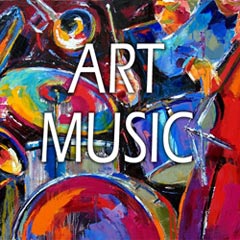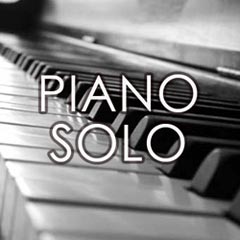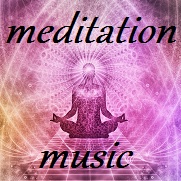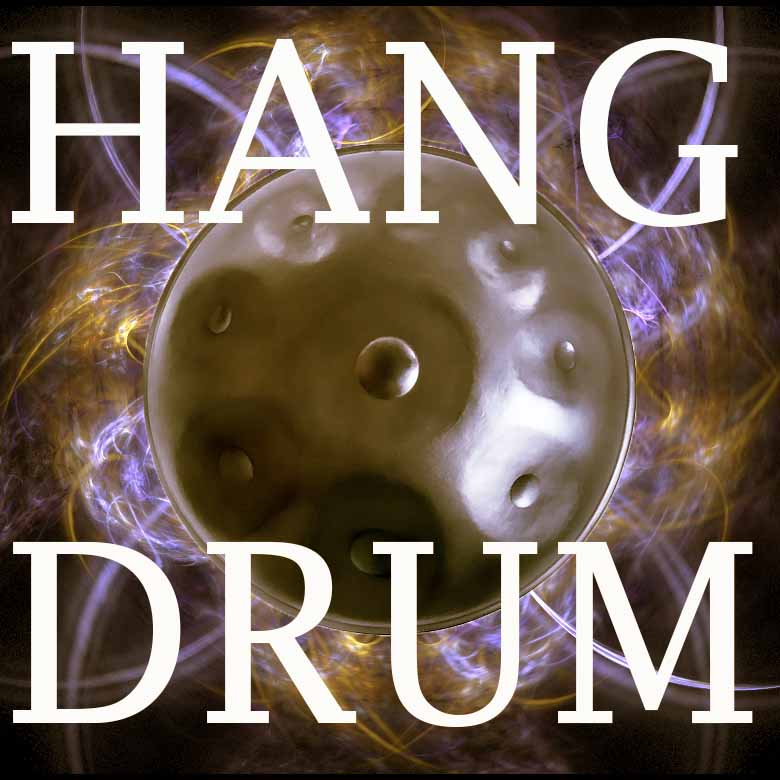Classical music
Structured and conceptually advanced music, where the written music is imbued with the beauty of the sounds from all the orchestral instruments. Classical music is the heart of music. It began to be composed in 1750-1830 by different artists like Wolfgang Amadeus Mozart, Joseph Haydn, and Ludwig van Beethoven. Classical music is a term that refers to different music genres related to structural and theoretical considerations. Classical music is a genre of music that has captivated audiences for centuries. It has stood the test of time to remain one of the longest ongoing forms of popular music, showcasing impressive works by some of history's great composers. This timeless art form contains many intricacies that sets it apart from other genres: the use of composed melodies, sharp rhythm, and intricate instrumentation create majestic pieces of organized sound. The complexity of this music allows it to capture emotion and convey meaningful messages, making for an effortless preservation in knowledge and culture. Classical music can stimulate intellectual development and evoke powerful emotions from those who take in its brilliance. Listen to the best classical music tracks on our playlist. This page features some of the most beautiful and timeless pieces ever written. Staimusic offers a wide variety of classical music for your l
Classical Music: A Timeless Art Form
Classical music is a term that encompasses various music genres that are related to structural and theoretical considerations. It is an art form that has stood the test of time, captivating audiences for centuries. Brilliantly crafted by some of history's greatest composers, such as Wolfgang Amadeus Mozart, Joseph Haydn, and Ludwig van Beethoven, classical music is a genre that has firmly established itself as a cornerstone of the musical world.
The Body:
One of the defining features of classical music is the structure that underpins its compositions. Each piece is a meticulously crafted work of art, centered around specific themes that are developed throughout the piece. The music is imbued with the beauty and complexity of the sounds from all the orchestral instruments. It is a genre of music that has something to offer everyone, regardless of taste.
The use of composed melodies, sharp rhythm, and intricate instrumentation create majestic pieces of organized sound that touch the hearts of listeners. The beauty of the music is its complexity, allowing it to capture emotion and convey meaningful messages, making for an effortless transition into the realms of the subconscious mind.
Classical music is often associated with the ambiance of grand concert halls and opera houses, where performers take to the stage in formal attire, and the audience is expected to dress accordingly. However, classical music has evolved over time and has been adapted to suit modern sensibilities. There are now many ways to experience classical music that cater to a wider audience. For example, there are concerts that are designed to be family-friendly, including performances that feature pop-culture-inspired music while still fitting within the classical genre.
Classical music has also made its way into popular culture, featuring in films, TV shows, and video games. Its presence in these mediums has even given rise to the creation of symphony orchestras dedicated to performing film scores live in concert, transcending the preconceptions surrounding classical music and bringing it to new audiences.
Classical music is an art form that continues to flourish, offering listeners a glimpse into the minds and talents of some of the world's greatest musical geniuses. The beauty of this genre lies in its immense complexity, with every note and beat carefully crafted to create a breathtaking masterpiece of sound. It is a timeless form of expression that has stood the test of time and remains a cornerstone of the musical world. Whether it's for relaxation or inspiration, classical music has something to offer everyone and is definitely worth exploring.
Classical Music: A Timeless Art Form
Classical music is a term that encompasses various music genres that are related to structural and theoretical considerations. It is an art form that has stood the test of time, captivating audiences for centuries. Brilliantly crafted by some of history's greatest composers, such as Wolfgang Amadeus Mozart, Joseph Haydn, and Ludwig van Beethoven, classical music is a genre that has firmly established itself as a cornerstone of the musical world.
The Body:
One of the defining features of classical music is the structure that underpins its compositions. Each piece is a meticulously crafted work of art, centered around specific themes that are developed throughout the piece. The music is imbued with the beauty and complexity of the sounds from all the orchestral instruments. It is a genre of music that has something to offer everyone, regardless of taste.
The use of composed melodies, sharp rhythm, and intricate instrumentation create majestic pieces of organized sound that touch the hearts of listeners. The beauty of the music is its complexity, allowing it to capture emotion and convey meaningful messages, making for an effortless transition into the realms of the subconscious mind.
Classical music is often associated with the ambiance of grand concert halls and opera houses, where performers take to the stage in formal attire, and the audience is expected to dress accordingly. However, classical music has evolved over time and has been adapted to suit modern sensibilities. There are now many ways to experience classical music that cater to a wider audience. For example, there are concerts that are designed to be family-friendly, including performances that feature pop-culture-inspired music while still fitting within the classical genre.
Classical music has also made its way into popular culture, featuring in films, TV shows, and video games. Its presence in these mediums has even given rise to the creation of symphony orchestras dedicated to performing film scores live in concert, transcending the preconceptions surrounding classical music and bringing it to new audiences.
Classical music is an art form that continues to flourish, offering listeners a glimpse into the minds and talents of some of the world's greatest musical geniuses. The beauty of this genre lies in its immense complexity, with every note and beat carefully crafted to create a breathtaking masterpiece of sound. It is a timeless form of expression that has stood the test of time and remains a cornerstone of the musical world. Whether it's for relaxation or inspiration, classical music has something to offer everyone and is definitely worth exploring.
2023-05-11
The definition and the growth of classical music
Defining the term classical music won’t be easy. Comprises the wide range of different music, various instrumentation, and style, classical music can be considered as the western culture product which changed over time. Hundred years of the process create a different style of classical music, and it has their own characteristics in each era. There are lots of distinct periods of classical music, started from the early period, baroque, classic, romantic, and modern era and hence classical music has hundreds of different composers and each of them has their own unique. Maybe many famous composer’s works of classical music involving the orchestra. However, many smaller works have the smaller format, for example, the music for solo instrument, chamber music (can be duet, trio, quartet, quintet, and so on), and ensemble. Hence, the classical music areas are vast, and the richness of the music is unparalleled.Most of our church music, which used the Latin language, comes from the early period when all of the music utilization is still strictly focus for the church. At the near-end of the early period is called the renaissance period, which parallels the era of enlightenment. At that time, many artists and people started to forcefully break the strong restraint of the church rules, including the music. It becomes the bridge between the middle ages and the modern age. Hence, thanks to the renaissance, the baroque era depicts the new level of meaning and complexity of music compared to the previous and the example can be seen in J.S Bach works. Listen to the Inventions for solo piano and Toccata and Fugue in D minor to find the complexity of the counterpoint during the baroque era. The ornamentation in the music becomes one of the characteristics of baroque. Also, see Vivaldi Four seasons to witness the representation of the four seasons during that era with solo violin and accompanied by the baroque style orchestra.Moves to the classic era, there are changes of musical style contrastingly, from a complicated texture and ornamented music to less complicated with the focus on the elegance. One of the most notable composers is W.A Mozart, a young genius who composed various famous works, including the Eine Kleine Nachtmusik, and some renowned opera, such as Le Nozze di Figaro and Don Giovanni. Another influential composer is F.J Haydn who has the title as the ‘Father of the Symphony’ and the ‘Father of the String Quartet’ due to his contributions to these formats. One of the famous works of Haydn is String Quartet no. 62 in C Major Op.76 No.3 or shortly, Haydn Emperor string quartet. Then, the music changes again to the romantic era with the romanticism philosophy. The notable musician who contributes to this drastic change is Ludwig van Beethoven. If you see his early works, such as String quartet no.1 in F major has the classical characteristics. However, the drastic changes can be seen in Symphony no.5 and all of his late works, including the famous Symphony no. 9. The most influential violinist who produces numerous virtuosic pieces for violin, Niccolo Paganini are also born in the romantic era. Listen to his concerto no. 1 for violin and orchestra, Nel cor piu non mi sento, and 24 caprices for solo violin to witness one of the hardest violin pieces of all time. Another influential composer is Peter Ilyich Tchaikovsky, who creates three famous ballets, such as Swan Lake, The Nutcracker, and Sleeping Beauty. The transition from the romantic period to the modern period is more brutal. The invention of the twelve-tone system by Arnold Schoenberg and Alban Berg marks out the changes of the era from the transition to modern. In this era, many composers seek new, organic sounds from folk songs and indigenous music. For example, Bela Bartok’s Romanian dance and some of the Debussy works are inspired by Javanese gamelan. All of the composers I mentioned before is only a brief explanation of how vast classical music is, and it also has profound influences in the music disseminated to the worlds today. To start listening to classical music, you can start looking at the timeline. Start listening to the composers of the baroque era, then move to the classical period, the romantic era, and the modern era. Hence, it will give you a broad perspective on how music develops.
Tag: classical music, art music, J.S Bach, Vivaldi, W.A Mozart
2023-01-18
What Emotion Can Violin Represent in a Composition? The importance of violin in classical music
Violin is a very emotional instrument, one of the most important in classical music. It can represent many different emotions in a composition, from happy and cheerful to sad and mournful. The type of emotion that violin can represent depends on how the composer writes the music and how the violinist plays it.
Violin can represent happy and cheerful emotions in a composition by having a fast tempo and playing the notes in a high register. The notes played in a high register tend to be more bright and cheerful sounding.
Violin can also represent sad and mournful emotions in a composition by having a slow tempo and playing the notes in a low register. The notes played in a low register tend to be more mellow and sad sounding.
And depending on how you mic a violin in the studio, you can also get a very aggressive, biting tone from the instrument - perfect for conveying rage or other dark emotions.
So, in short, the emotional range that a violin can represent in a composition is quite vast. And now, let's dive in and go through a list of some popular emotions that are often represented by violin in compositions.
Happy and Cheerful
The Four Seasons: Spring by Antonio Vivaldi
The Nutcracker Suite: Dance of the Sugar Plum Fairy by Pyotr Ilyich Tchaikovsky
Swan Lake: Pas de Deux by Pyotr Ilyich Tchaikovsky
When it comes to happy and cheerful violin pieces, Vivaldi's The Four Seasons: Spring and Tchaikovsky's The Nutcracker Suite: Dance of the Sugar Plum Fairy are perhaps two of the most well-known. Both pieces have a fast tempo and high register, giving them a bright and cheerful sound.
Sad and Mournful
Requiem by Wolfgang Amadeus Mozart
Concerto for Violin, String Orchestra and Harpsichord in D minor by Johann Sebastian Bach
Adagio for Strings by Samuel Barber
Some of the saddest and mournful sounding violin pieces include Mozart's Requiem, Bach's Concerto for Violin, String Orchestra and Harpsichord in D minor, and Barber's Adagio for Strings. These pieces all have a slow tempo and low register, giving them a more mellow and sad sound.
Rage
The Rite of Spring: Part 1: The Augurs of Spring - Dances of the Young Girls by Igor Stravinsky
One of the most aggressive sounding violin pieces is Stravinsky's The Rite of Spring: Part 1: The Augurs of Spring - Dances of the Young Girls. This piece has a very fast tempo and features the violin playing in a high register. The result is a biting, aggressive tone that conveys rage perfectly.
Peaceful and Relaxing
Canon in D major by Johann Pachelbel
Air on the G String by Johann Sebastian Bach
If you're looking for some peaceful and relaxing violin pieces, Pachelbel's Canon in D major and Bach's Air on the G String are both excellent choices. These pieces have a moderate tempo and feature the violin playing in a lower register. The result is a more mellow and relaxing sound.
Fearful and Intense:
The Four Seasons: Winter by Antonio Vivaldi
The Sorcerer's Apprentice by Paul Dukas
Some of the most fearful and intense sounding violin pieces include Vivaldi's The Four Seasons: Winter and Dukas' The Sorcerer's Apprentice. These pieces have a fast tempo and feature the violin playing in a high register. The result is a piercing, intense sound that conveys fear perfectly.
Surprised and Energetic:
The Surprise Symphony by Franz Joseph Haydn
One of the most surprised and energetic sounding violin pieces is Haydn's The Surprise Symphony. This piece has a fast tempo and features the violin playing in a high register. The result is a sharp, energetic sound that conveys surprise perfectly.
What Makes Violin an Emotional Instrument?
There are a few things that make violin an emotional instrument. First, the range of emotions that it can represent is quite vast. From happy and cheerful to sad and mournful, the violin can convey just about any emotion imaginable.
Second, the tone of the instrument can be very expressive. The timbre of the violin can be mellow and smooth or sharp and piercing, depending on how it's played. This allows the instrument to convey a wide range of emotions, from happiness and cheerfulness to rage and intensity.
Lastly, the dynamics of the violin are also very important in conveying emotion. The volume of the instrument can be soft and gentle or loud and aggressive, depending on how it's played. This, combined with the other expressive elements of the violin, makes it a very emotional instrument.
History of Violin
The violin is a stringed instrument that has been around for centuries. It is believed to have originated in Italy during the 16th century, and it quickly became one of the most popular instruments of the time. The early violins were quite different from the modern day instrument, but the basic design and function remained the same.
Throughout the years, the violin has been used in a wide variety of musical genres, from classical and baroque to jazz and rock. It is considered one of the most versatile instruments in the world, and it continues to be one of the most popular choices for musicians of all skill levels. The violin is a beautiful and emotional instrument that has a long and rich history. From its early beginnings in Italy to its current popularity all over the world, the violin has truly stood the test of time.
Tips for Playing Violin
If you're interested in playing violin, there are a few things you should keep in mind. First, the instrument is very delicate, so it's important to handle it with care.
Second, the violin is a very expressive instrument, so it's important to use proper technique in order to get the most out of it. Lastly, practice makes perfect! The more you play, the better you'll become at using the instrument to its full potential.
With these tips in mind, you'll be well on your way to becoming a master violinist in no time!
Violin can represent happy and cheerful emotions in a composition by having a fast tempo and playing the notes in a high register. The notes played in a high register tend to be more bright and cheerful sounding.
Violin can also represent sad and mournful emotions in a composition by having a slow tempo and playing the notes in a low register. The notes played in a low register tend to be more mellow and sad sounding.
And depending on how you mic a violin in the studio, you can also get a very aggressive, biting tone from the instrument - perfect for conveying rage or other dark emotions.
So, in short, the emotional range that a violin can represent in a composition is quite vast. And now, let's dive in and go through a list of some popular emotions that are often represented by violin in compositions.
Happy and Cheerful
The Four Seasons: Spring by Antonio Vivaldi
The Nutcracker Suite: Dance of the Sugar Plum Fairy by Pyotr Ilyich Tchaikovsky
Swan Lake: Pas de Deux by Pyotr Ilyich Tchaikovsky
When it comes to happy and cheerful violin pieces, Vivaldi's The Four Seasons: Spring and Tchaikovsky's The Nutcracker Suite: Dance of the Sugar Plum Fairy are perhaps two of the most well-known. Both pieces have a fast tempo and high register, giving them a bright and cheerful sound.
Sad and Mournful
Requiem by Wolfgang Amadeus Mozart
Concerto for Violin, String Orchestra and Harpsichord in D minor by Johann Sebastian Bach
Adagio for Strings by Samuel Barber
Some of the saddest and mournful sounding violin pieces include Mozart's Requiem, Bach's Concerto for Violin, String Orchestra and Harpsichord in D minor, and Barber's Adagio for Strings. These pieces all have a slow tempo and low register, giving them a more mellow and sad sound.
Rage
The Rite of Spring: Part 1: The Augurs of Spring - Dances of the Young Girls by Igor Stravinsky
One of the most aggressive sounding violin pieces is Stravinsky's The Rite of Spring: Part 1: The Augurs of Spring - Dances of the Young Girls. This piece has a very fast tempo and features the violin playing in a high register. The result is a biting, aggressive tone that conveys rage perfectly.
Peaceful and Relaxing
Canon in D major by Johann Pachelbel
Air on the G String by Johann Sebastian Bach
If you're looking for some peaceful and relaxing violin pieces, Pachelbel's Canon in D major and Bach's Air on the G String are both excellent choices. These pieces have a moderate tempo and feature the violin playing in a lower register. The result is a more mellow and relaxing sound.
Fearful and Intense:
The Four Seasons: Winter by Antonio Vivaldi
The Sorcerer's Apprentice by Paul Dukas
Some of the most fearful and intense sounding violin pieces include Vivaldi's The Four Seasons: Winter and Dukas' The Sorcerer's Apprentice. These pieces have a fast tempo and feature the violin playing in a high register. The result is a piercing, intense sound that conveys fear perfectly.
Surprised and Energetic:
The Surprise Symphony by Franz Joseph Haydn
One of the most surprised and energetic sounding violin pieces is Haydn's The Surprise Symphony. This piece has a fast tempo and features the violin playing in a high register. The result is a sharp, energetic sound that conveys surprise perfectly.
What Makes Violin an Emotional Instrument?
There are a few things that make violin an emotional instrument. First, the range of emotions that it can represent is quite vast. From happy and cheerful to sad and mournful, the violin can convey just about any emotion imaginable.
Second, the tone of the instrument can be very expressive. The timbre of the violin can be mellow and smooth or sharp and piercing, depending on how it's played. This allows the instrument to convey a wide range of emotions, from happiness and cheerfulness to rage and intensity.
Lastly, the dynamics of the violin are also very important in conveying emotion. The volume of the instrument can be soft and gentle or loud and aggressive, depending on how it's played. This, combined with the other expressive elements of the violin, makes it a very emotional instrument.
History of Violin
The violin is a stringed instrument that has been around for centuries. It is believed to have originated in Italy during the 16th century, and it quickly became one of the most popular instruments of the time. The early violins were quite different from the modern day instrument, but the basic design and function remained the same.
Throughout the years, the violin has been used in a wide variety of musical genres, from classical and baroque to jazz and rock. It is considered one of the most versatile instruments in the world, and it continues to be one of the most popular choices for musicians of all skill levels. The violin is a beautiful and emotional instrument that has a long and rich history. From its early beginnings in Italy to its current popularity all over the world, the violin has truly stood the test of time.
Tips for Playing Violin
If you're interested in playing violin, there are a few things you should keep in mind. First, the instrument is very delicate, so it's important to handle it with care.
Second, the violin is a very expressive instrument, so it's important to use proper technique in order to get the most out of it. Lastly, practice makes perfect! The more you play, the better you'll become at using the instrument to its full potential.
With these tips in mind, you'll be well on your way to becoming a master violinist in no time!
Tag: classical music, violin, composition, mozart, vivaldi
What are you thinking about?





